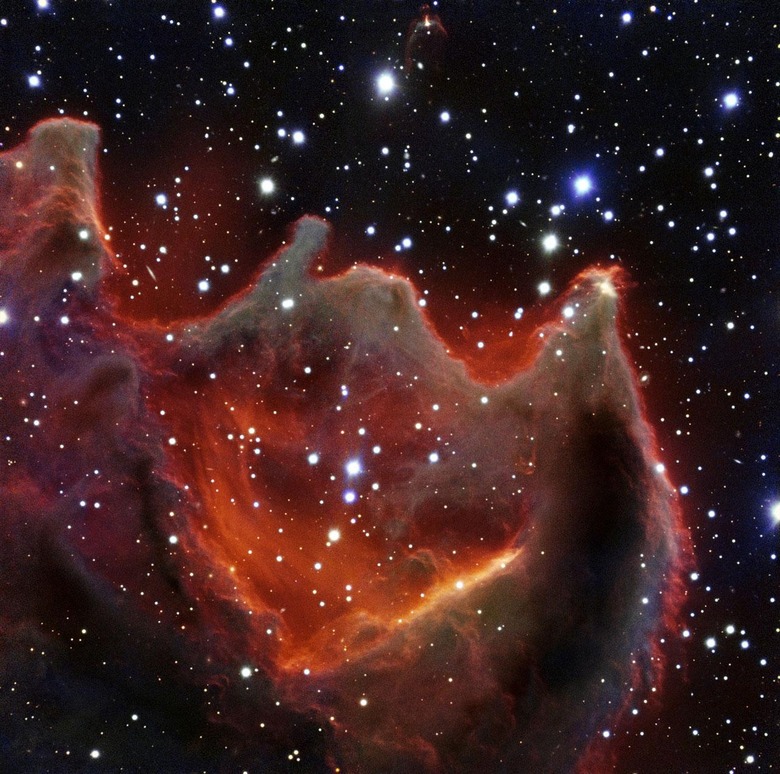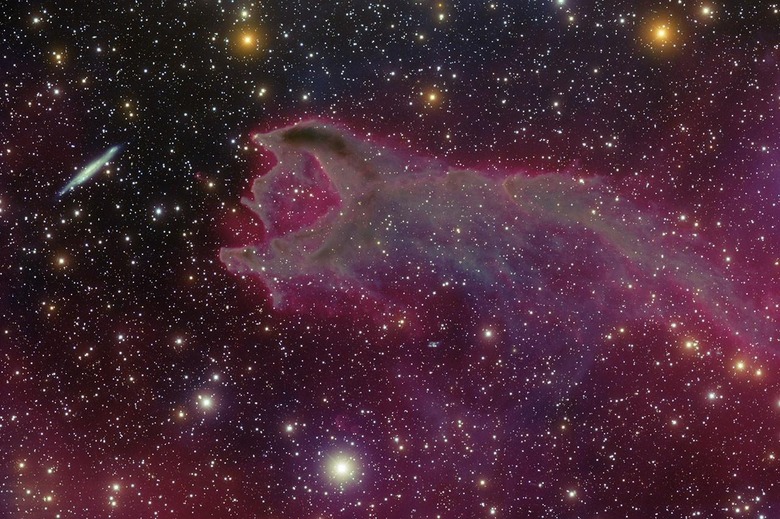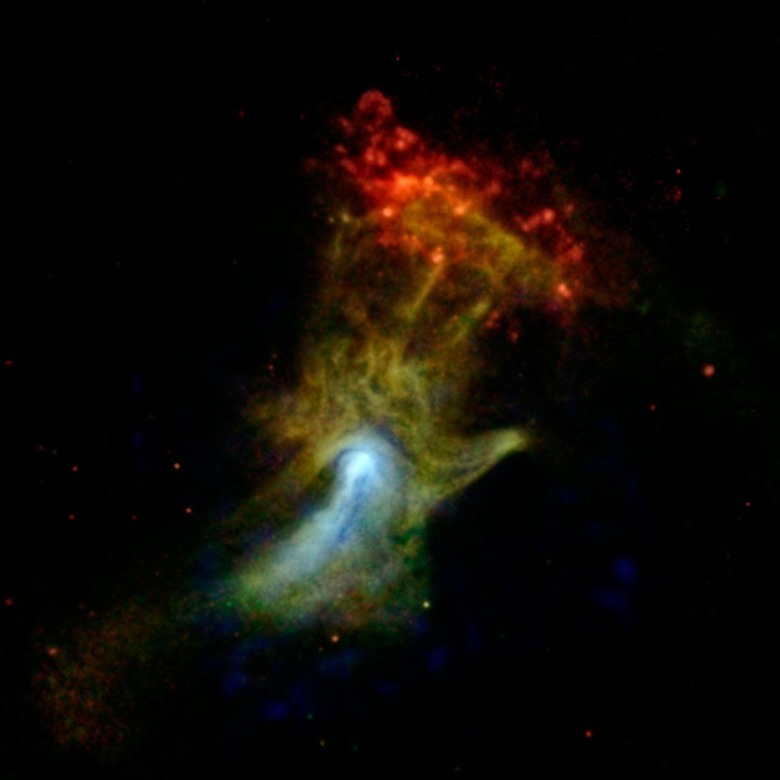Hand Of God Nebula Captured By Very Large Telescope
This week the European Southern Observatory (ESO)'s "Very Large Telescope" (VLT) captured an image of the Hand of God. This nebulous globule is also known as "Maw of the Beast", and lies around 1,300 light years away from the planet Earth. This image was captured as a part of ESO's "Comic Gems" program which is aimed at capturing images with telescopes such as the Very Large Telescope for education in classrooms and public outreach. The Very Large Telescope operates at the Paranal Observatory.
VIMOS and FORS2 spectrographs on the Very Large Telescope aid in capturing images for this Cosmic Gems series. Another instrument used in this program is the Wide Field Imager on the 2.2-metre MPG/ESO telescope at La Silla.

Above: the Cosmic Gems program logo. Below: the Very Large Telescope at Paranal Observatory.
The Hand of God is known by its slightly more proper name Cometary Globule CG4. This dusty cloud is located in the constellation Puppis and has been captured with high-powered instruments before, but never with such a brilliant amount of sharpness.
As with each of the images in this article, click to see a larger version.
The purple image of CG4 you see below also depicts CG4 "the hand of god" and comes from the Cerro Tololo Inter-American Observatory. This image was captured with a 64-megapixel mosaic imaging camera in the National Science Foundation's Victor M. Blanco telescope. This image comes via NOAO.
Another image of a so-called "hand of god" comes from NASA's Nuclear Spectroscopic Telescope Array. This image is NOT the same cosmic body as CG4 above – but if you search for "hand of god" in space photos on the web, you'll likely see both.
Don't get them twisted! This is PSR B1509-58, a pulsar left after the explosion of a star.
The video above comes from ESO as well, with credit to J.Perez/Digitized Sky Survey 2/N. Risinger (skysurvey.org) and music from movetwo. This video starts with a wide view of the southern Milky Way and dives into the Puppis constellation, eventually landing in the cometary globule CG4, the Hand of God.




